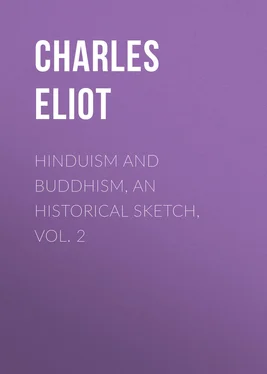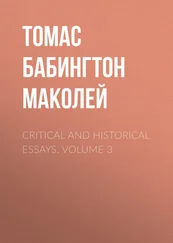Charles Eliot - Hinduism and Buddhism, An Historical Sketch, Vol. 2
Здесь есть возможность читать онлайн «Charles Eliot - Hinduism and Buddhism, An Historical Sketch, Vol. 2» — ознакомительный отрывок электронной книги совершенно бесплатно, а после прочтения отрывка купить полную версию. В некоторых случаях можно слушать аудио, скачать через торрент в формате fb2 и присутствует краткое содержание. Жанр: foreign_religion, Философия, Религиозная литература, foreign_psychology, foreign_antique, foreign_prose, на английском языке. Описание произведения, (предисловие) а так же отзывы посетителей доступны на портале библиотеки ЛибКат.
- Название:Hinduism and Buddhism, An Historical Sketch, Vol. 2
- Автор:
- Жанр:
- Год:неизвестен
- ISBN:нет данных
- Рейтинг книги:4 / 5. Голосов: 1
-
Избранное:Добавить в избранное
- Отзывы:
-
Ваша оценка:
- 80
- 1
- 2
- 3
- 4
- 5
Hinduism and Buddhism, An Historical Sketch, Vol. 2: краткое содержание, описание и аннотация
Предлагаем к чтению аннотацию, описание, краткое содержание или предисловие (зависит от того, что написал сам автор книги «Hinduism and Buddhism, An Historical Sketch, Vol. 2»). Если вы не нашли необходимую информацию о книге — напишите в комментариях, мы постараемся отыскать её.
Hinduism and Buddhism, An Historical Sketch, Vol. 2 — читать онлайн ознакомительный отрывок
Ниже представлен текст книги, разбитый по страницам. Система сохранения места последней прочитанной страницы, позволяет с удобством читать онлайн бесплатно книгу «Hinduism and Buddhism, An Historical Sketch, Vol. 2», без необходимости каждый раз заново искать на чём Вы остановились. Поставьте закладку, и сможете в любой момент перейти на страницу, на которой закончили чтение.
Интервал:
Закладка:
The Divyâvadâna 154 154 Edited by Cowell and Neil, 1886. See Nanjio, 1344.
is a collection of legends, part of which is known as the Asokâvadâna and gives an edifying life of that pious monarch. This portion was translated into Chinese A.D. 317-420 and the work probably dates from the third century of our era. It is loosely constructed: considerable portions of it seem to be identical with the Vinaya of the Sarvâstivâdins and others with passages in the works of Aśvaghosha.
The Avadânas lie on the borderland between scripture and pious literature which uses human argument and refers to scripture for its authority. Of this literature the Mahayanist church has a goodly collection and the works ascribed to such doctors as Aśvaghosha, Nâgârjuna, Asanga and Vasubandhu hold a high place in general esteem. The Chinese Canon places many of them in the Pitakas (especially in the Abhidharma Pitaka) and not among the works of miscellaneous writers.
The Mahayanist scriptures are still a living force. In Nepal the nine Dharmas receive superstitious homage rather than intelligent study, but in Tibet and the Far East the Prajñâ-pâramitâ, the Lotus and the sutras about Amitâbha are in daily use for public worship and private reading. I have heard the first-named work as well as the Lêng-yen-ching expounded, that is, read aloud with an extempore paraphrase, to lay congregations in China, and the section of it called the Diamond Cutter is the book which is most commonly in the hands of religious Tibetans. The Lotus is the special scripture of the Nichiren sect in Japan but is universally respected. The twenty-fourth chapter which contains the praises of Avalokita is often printed separately. The Amitâbha sûtras take the place of the New Testament for the Jōdō and Shin sects and copies of them may also be found in almost every monastery throughout China and Annam. The Suvarṇa-prabhâsa is said to be specially popular among the Mongols. I know Chinese Buddhists who read the Hua-yen (Avataṃsaka) every day. Modern Japanese writers quote frequently from the Lankâvatâra and Kâśyapa-parivarta but I have not met with any instance of these works being in popular use.
I have mentioned already the obscurity surrounding the history of the Mahayanist Canon in India and it may seem to throw doubt on the authenticity of these scriptures. Unauthentic they certainly are in the sense that European criticism is not likely to accept as historical the discourses which they attribute to the Buddha and others, but there is no reason to doubt that they are treatises composed in India early in our era and representing the doctrines then prevalent. The religious public of India has never felt any difficulty in accepting works of merit—and often only very moderate merit—as revelations, whether called Upanishads, Puranas, Sutras or what not. Only rarely have such works received any formal approbation, such as recognition by a council. Indeed it is rather in Ceylon, Burma, Tibet and China than in India itself that authoritative lists of scriptures have been compiled. The natural instinct of the Hindus was not to close the Canon but to leave it open for any additions which might be vouchsafed.
Two sketches of an elastic Mahayanist Canon of this kind are preserved, one in the Śikshâsamuccaya 155 155 Edited by Bendall in Bibl. Buddhica.
attributed to Śântideva, who probably flourished in the seventh century, and the other in a little work called the Duration of the Law, reporting a discourse by an otherwise unknown Nandimitra, said to have lived in Ceylon 800 years after the Buddha's death. 156 156 Nanjio, No. 1466. For a learned discussion of this work see Lévi and Chavannes in J.A. 1916, Nos. I and II.
The former is a compendium of doctrine illustrated by quotations from what the author regarded as scripture. He cites about a hundred Mahayanist sutras, refers to the Vinaya and Divyâvadâna but not apparently to the Abhidharma. He mentions no Tantras 157 157 It is not likely that the Tathâgata-guhya-sûtra which it quotes is the same as the Tantra with a similar name analysed by Rajendralal Mitra.
and not many Dhâraṇîs.
The second work was translated by Hsüan Chuang and was therefore probably written before 600 A.D. 158 158 Watters, J.R.A.S. 1898, p. 331 says there seems to have been an earlier translation.
Otherwise there is no external evidence for fixing its date. It represents Nandimitra as explaining on his deathbed the steps taken by the Buddha to protect the True Law and in what works that Law is to be found. Like the Chinese Tripitaka it recognizes both Mahayanist and Hinayanist works, but evidently prefers the former and styles them collectively Bodhisattva-Piṭaka. It enumerates about fifty sutras by name, beginning with the Prajñâ-pâramitâ, the Lotus and other well-known texts. Then comes a list of works with titles ending in Samâdhi, followed by others called Paripṛicchâ 159 159 Many works with this title will be found in Nanjio.
or questions. A new category seems to be formed by the Buddhâvataṃsaka-sûtra with which the sutras about Amitâbha's Paradise are associated. Then comes the Mahâsannipâta-sûtra associated with works which may correspond to the Ratnakûṭa division of the Chinese Canon. 160 160 But the Chinese title seems rather to represent Ratnarâsi.
The writer adds that there are "hundreds of myriads of similar sutras classified in groups and categories." He mentions the Vinaya and Abhidharma without further particulars, whereas in describing the Hinayanist versions of these two Pitakas he gives many details.
The importance of this list lies in the fact that it is Indian rather than in its date, for the earliest catalogue of the Chinese Tripitaka compiled about 161 161 See Nanjio, pp. xiii-xvii.
510 is perhaps older and certainly ampler. But if the catalogue stood alone, it might be hard to say how far the selection of works in it was due to Chinese taste. But taking the Indian and Chinese evidence together, it is clear that in the sixth century Indian Mahayanists ( a ) tolerated Hinayanist scriptures while preferring their own, ( b ) made little use of the Vinaya or Abhidharma for argument or edification, though the former was very important as a code, ( c ) recognized extremely numerous sutras, grouped in various classes such as Mahâsannipâta and Buddhâvataṃsaka, ( d ) and did not use works called Tantras. Probably much the same is true of the fourth century and even earlier, for Asanga in one work 162 162 Mahâyâna-sûtrâlankâra. See Lévi's introduction, p. 14. The "Questions" sutra is Brahma-paripṛicchâ.
quotes both Maha-and Hinayanist scriptures and among the former cites by name seventeen sutras, including one called Paripṛicchâ or questions.
CHAPTER XXI
CHRONOLOGY OF THE MAHAYANA
In the previous chapters I have enumerated some features of Mahayanism, such as the worship of Bodhisattvas leading to mythology, the deification of Buddhas, entailing a theology as complicated as the Christian creeds, the combination of metaphysics with religion, and the rise of new scriptures consecrating all these innovations. I will now essay the more difficult task of arranging these phenomena in some sort of chronological setting.
The voluminous Chinese literature concerning Buddhism offers valuable assistance, for the Chinese, unlike the Hindus, have a natural disposition to write simple narratives recording facts and dates. But they are diarists and chroniclers rather than historians. The Chinese pilgrims to India give a good account of their itinerary and experiences, but they have little idea of investigating and arranging past events and merely recount traditions connected with the places which they visited. In spite of this their statements have considerable historical value and on the whole harmonize with the literary and archæological data furnished by India.
Читать дальшеИнтервал:
Закладка:
Похожие книги на «Hinduism and Buddhism, An Historical Sketch, Vol. 2»
Представляем Вашему вниманию похожие книги на «Hinduism and Buddhism, An Historical Sketch, Vol. 2» списком для выбора. Мы отобрали схожую по названию и смыслу литературу в надежде предоставить читателям больше вариантов отыскать новые, интересные, ещё непрочитанные произведения.
Обсуждение, отзывы о книге «Hinduism and Buddhism, An Historical Sketch, Vol. 2» и просто собственные мнения читателей. Оставьте ваши комментарии, напишите, что Вы думаете о произведении, его смысле или главных героях. Укажите что конкретно понравилось, а что нет, и почему Вы так считаете.












